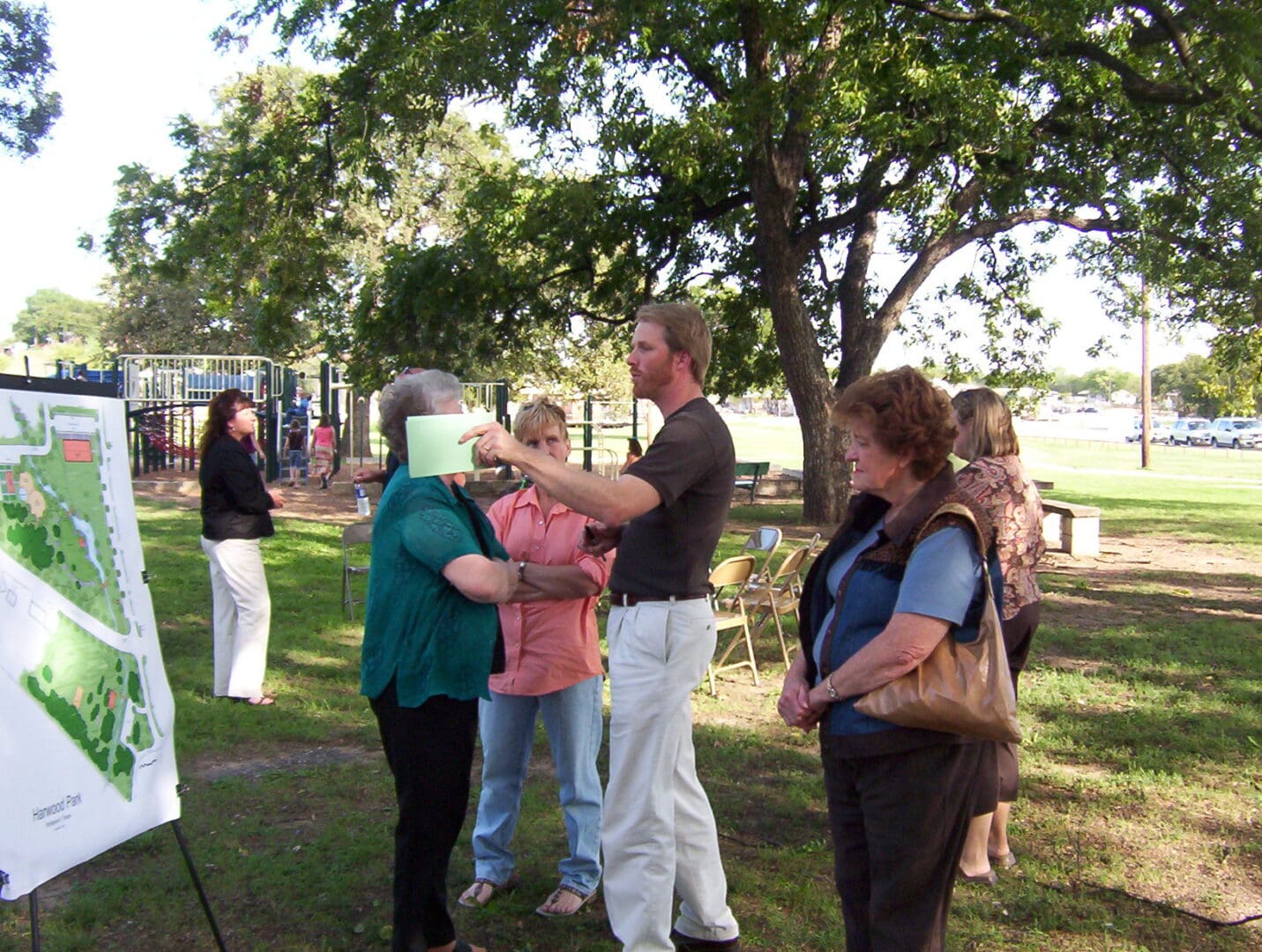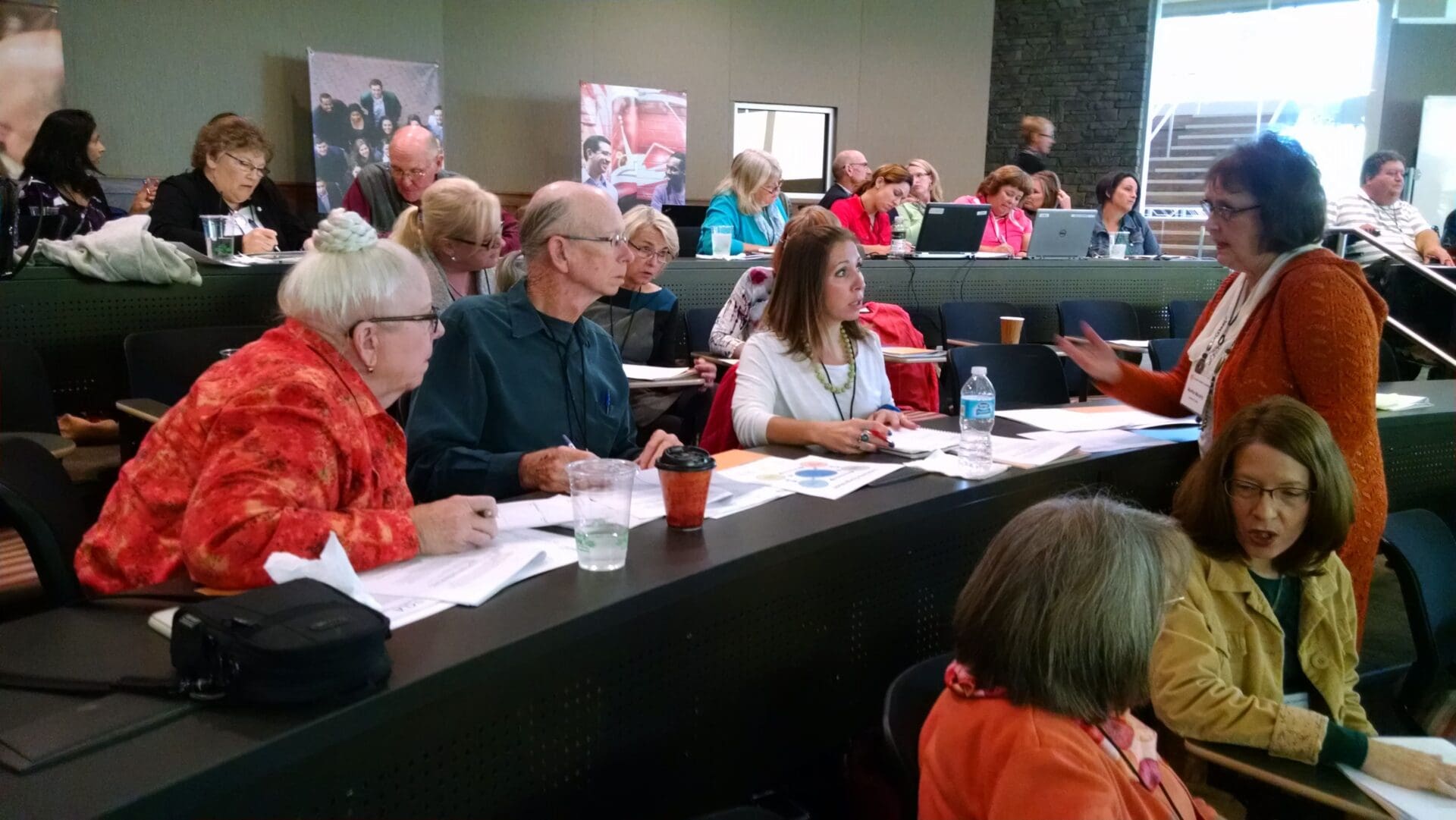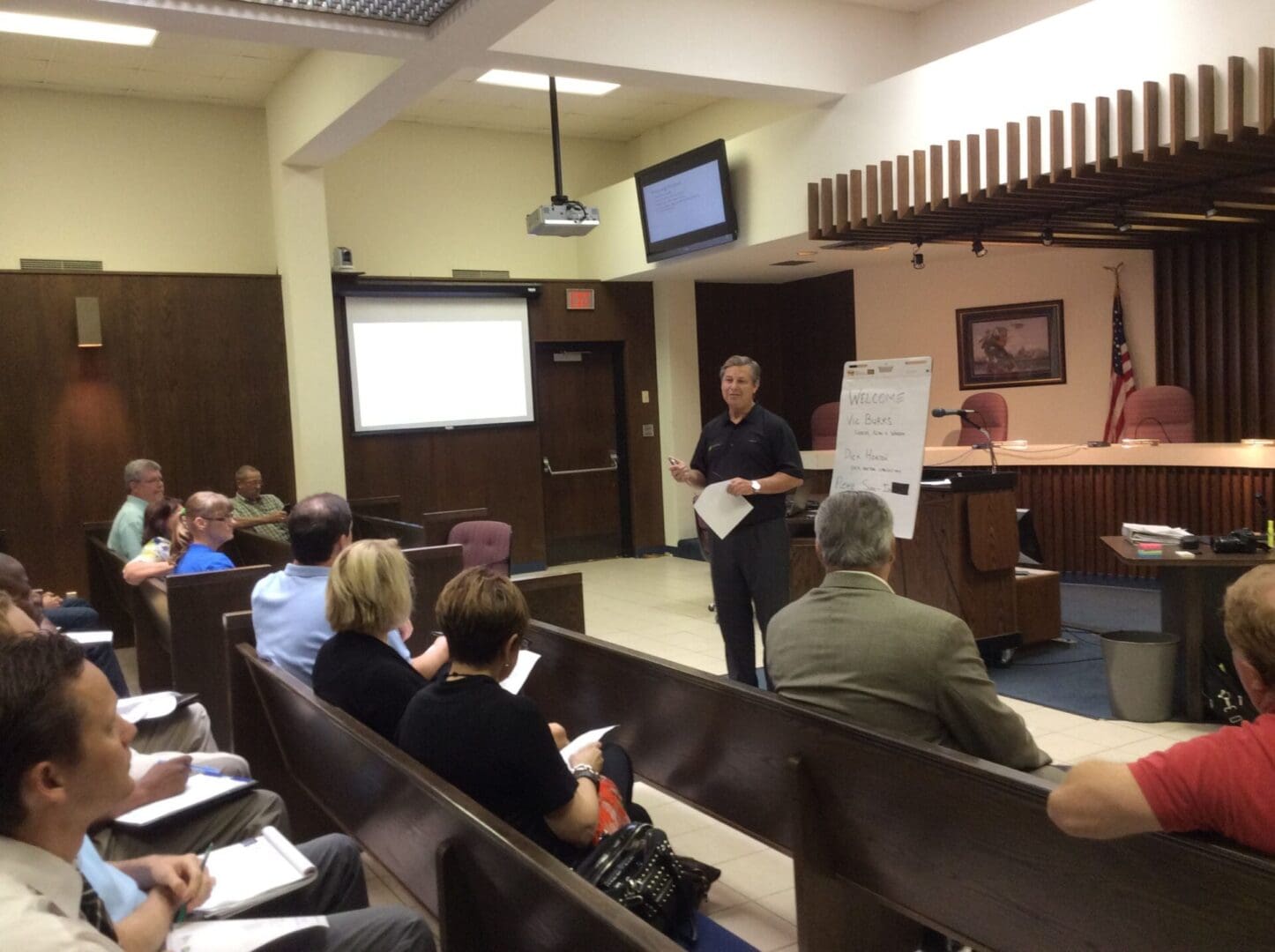A COMMUNITY ENGAGEMENT PROCESS THAT CONNECTS WITH CITIZENS
Engaging with the community is at the core of my approach. I believe in fostering meaningful connections through a structured engagement process that leverages imagery, consensus-building tools, innovative venues, and cutting-edge technology. With a foundation built on statistically valid surveys and years of Toastmasters training, every interaction and presentation is meticulously organized to ensure the citizens' voices are heard and truly listened to.

Quantifiable Information
When it comes to gathering quantifiable data, DHC collaborates with the ETC Institute, employing statistically valid citizen surveys. This invaluable data empowers our clients to make well-informed decisions regarding their community.
Engagement Venues
Dedication to community engagement is vividly captured in the photo above, where DHC hosted citizens in a park setting. This event, complete with food and fun activities for children, provided a platform for the public to offer feedback on matters of significance.
Use of Imagery
The use of imagery enhances involvement and comprehension. DHC always integrates visuals into public engagement venues. For instance, the image provided illustrates what a planned park improvement will look like upon completion, making it easier for citizens to grasp.

Engagement Tools
At DHC, I employ various engagement tools to facilitate citizen participation in the process.

Use of Technology
In today's quest for a "preferred future," an array of technologies are utilized:
This comprehensive technological approach ensures that citizens of all ages and backgrounds are reached.
The Process Matters
DHC understands that the process itself holds immense importance. At DHC, citizens at large are given a platform to express themselves before organized interest groups. The DHC process for developing a comprehensive parks and recreation master plan follows a structured flow as detailed below:
At every step of the way, citizens' voices are not only valued but serve as the driving force behind all recommendations and plans. This dedication to meaningful community engagement is what sets DHC apart in the field.

Visioning
In the realm of planning, I hold fast to the belief that "Change is the law of life. Those who look only to the past or present are certain to miss the future." This anonymous quote resonates deeply with me. Through the Dick Horton Consulting Visioning Process, I have witnessed clients reaping significant benefits. It positions them to explore options that transcend the immediate issues of the day.
Comprehensive Master Planning
Our forte lies in crafting comprehensive master plans tailored for park and recreation agencies. These plans follow a structured approach, encompassing three pivotal phases: data collection, data analysis, and recommendations. Most master plans DHC creates include a needs assessment, public engagement, level of service analysis, trend evaluation, benchmarking, demographic scrutiny, financial and funding analysis, core service identification, operational and maintenance planning, strategic goal setting, and implementation strategies for all quality of life services.
Feasibility Studies
DHC excels at conducting feasibility studies, particularly for typical park and recreation agency amenities like community centers and athletic field complexes. Drawing from our extensive experience as a Director of Parks and Recreation, we bring a wealth of knowledge required to complete such studies.
Maintenance Management Assessments
The State of New Mexico recognized my team’s expertise in developing a maintenance management plan, a commendation that spurred the creation of several other plans across the United States by DHC. Because many agencies lack the requisite data to complete maintenance studies, we at DHC step in to provide a proven approach to extract the data that is needed from Department records and interactive conversations with staff.
Recreation Program Assessments
I possess a unique proficiency in evaluating existing recreation programs and devising tailored programs for new agencies without a prior programming history. Every community harbors program preferences influenced by factors like age, gender, ethnicity, income, and education.
I collaborate closely with you to pinpoint the programs that will garner the most popularity.
Economic Impact Assessments
The contributions of parks, programs, services, and facilities offered by park and recreation agencies reverberate in the local economy. For agencies keen on quantifying this impact, I lend my expertise to develop a tailored approach for collecting the necessary data to assess the total economic influence.

Education/Training
Education - Most Requested Presentations
Training Opportunities

Organizational Assessment
Over time, demands on an organization can change due to any number of things. For example, resources may be added or taken away; political environments may modify the way an agency operates; or national, regional, or local trends may have an impact. Under any condition, it is appropriate to evaluate your organization to make sure that current conditions are aligned with organizational capabilities to respond to them in an effective and efficient manner.
Communication Audits
I believe in author John Maxwell's words when he says, "It is not enough to do a good job or to work hard, as we will only be successful when we communicate well with others". I understand that communication issues exist in all agencies, and that we can identify those issues and offer realistic approaches to mitigating them.
Process Evaluations
With training in W. Edward Deming's "Total Quality Management Principles", I am well-versed in his best practices toward process evaluation. My process evaluation process will determine if program activities have been implemented as intended and if those activities resulted in the intended output.
Partnership Analysis
There has been an incredible growth in the development of partnerships in the profession. The downturn of the economy in 2008 was the most recent recognition of the need/popularity to leverage resources to sustain or add new facilities, programs, and services. I work routinely with communities to identify and develop all three partnership types: public/public, public/private, and public/not-for-profit.
